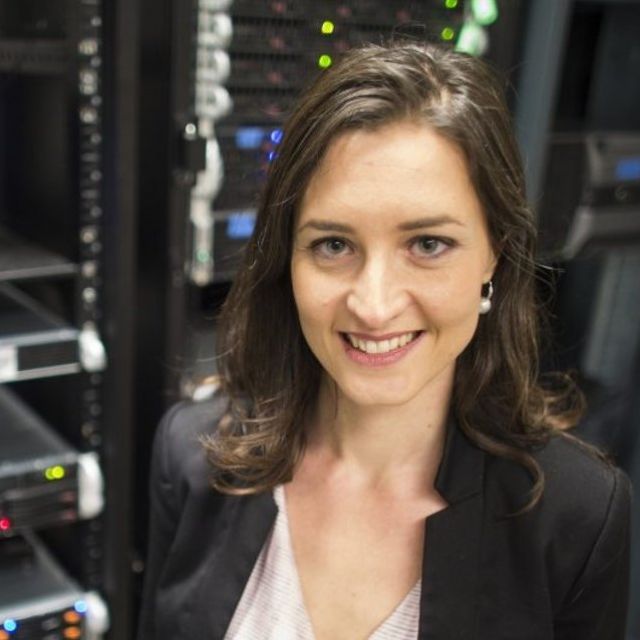
Giulia Palermo
Unraveling the Mechanistic Basis of the CRISPR-Cas Revolution through Computational Methods
CRISPR is synonymous with a transformative genome editing technology that is innovating basic and applied sciences. I will report about the use of computational approaches to clarify the molecular basis and the gene-editing function of CRISPR-Cas9 and newly discovered CRISPR systems that are emerging as powerful tools for viral detection. We have implemented a multiscale approach, which combines classical molecular dynamics (MD) and enhanced sampling techniques, mixed quantum-classical approaches and cryo-EM fitting tools and graph theory derived analysis methods, to reveal the mechanistic basis of nucleic acid binding, catalysis, selectivity, and allostery in CRISPR systems. Using accelerated MD simulations and the Anton-2 supercluster – known as one of the world’s fastest supercomputers for molecular simulations – we determined the conformational activation of CRISPR-Cas9 and provided insights into the selectivity mechanism against off-target sequences. By applying network models graph theory, we have characterized a mechanism of allosteric regulation, transferring the information of DNA binding to the catalytic sites for cleavages. This mechanism is now being probed in novel Anti-CRISPR proteins, forming multi-mega Dalton complexes with the CRISPR enzymes and used for gene regulation and control. Finally, by using multi-microsecond MD simulations we have recently probed a mechanism of DNA-induced of activation in the Cas12a enzyme, which underlies the detection of viral genetic elements. Overall, our outcomes contribute to the mechanistic understanding of CRISPR-based gene-editing technologies, providing information that is critical for the development of improved gene-editing tools for biomedical applications.
Bio:
Giulia Palermo is a computational biophysicist with expertise in molecular simulations. She is an Assistant Professor in the Department of Bioengineering at the University of California Riverside, and a cooperating Faculty in the Department of Chemistry. Her research uses computational biophysics to clarify the mechanism of action of biological systems of key importance for genome editing and regulation.
She is a native of Italy where she earned her PhD in 2013 from the Italian Institute of Technology working with Dr. Marco De Vivo. Her graduate studies led to more than 10 first-author papers, drawing on quantum chemistry and mixed quantum-classical methods to explore the mechanistic function of a number of enzymes. During her two-year post-doc at the Swiss Federal Institute of Technology (EPFL) in the group of Prof. Ursula Rothlisberger, she initiated studies of allostery in proteins and nucleic acids, focusing on chromatin drug development and on the mechanism of RNA splicing by the spliceosome.
In 2016, she was awarded a Swiss National Science Foundation (NSF) post-doctoral fellowship to join the group of Prof. J. Andrew McCammon at the University of California San Diego. At UCSD, she worked on novel multiscale approaches and enhanced simulations to enable studying increasingly realistic biological systems obtained through cryo-EM and tomography. Her current interests focus on understanding dynamics and mechanisms of novel CRISPR-Cas gene-editing systems that are transformative for life sciences. Research from her lab has been selected twice for the 2021 and 2018 editions of the Journal of the American Chemical Society Young Investigators virtual issue. She received several prestigious awards, including the NSF Career award (2021), the Corwin Hansch Award to outstanding scientists under 40 (2020) and the OpenEye Outstanding Junior Leader in Computational Chemistry (2022).